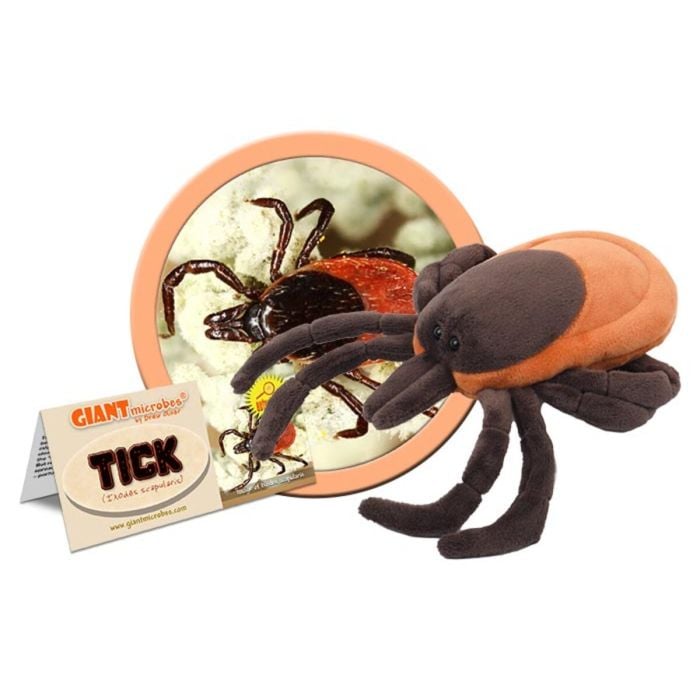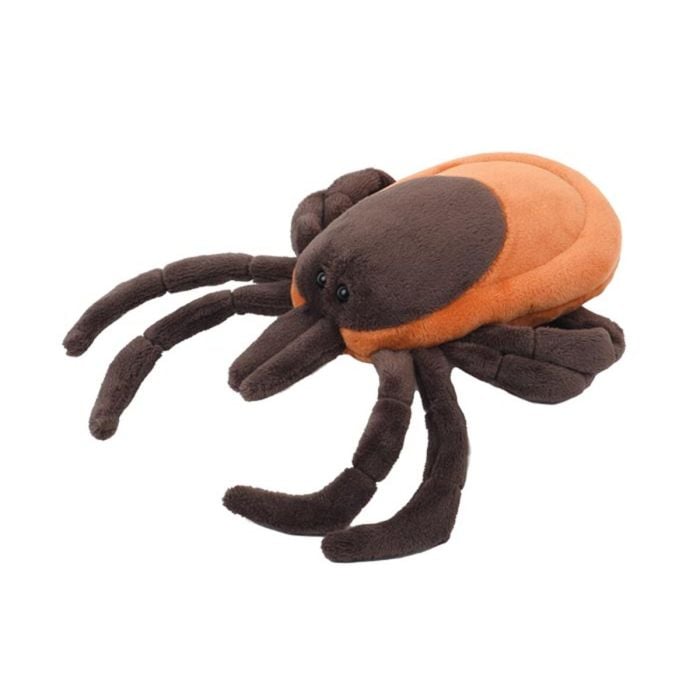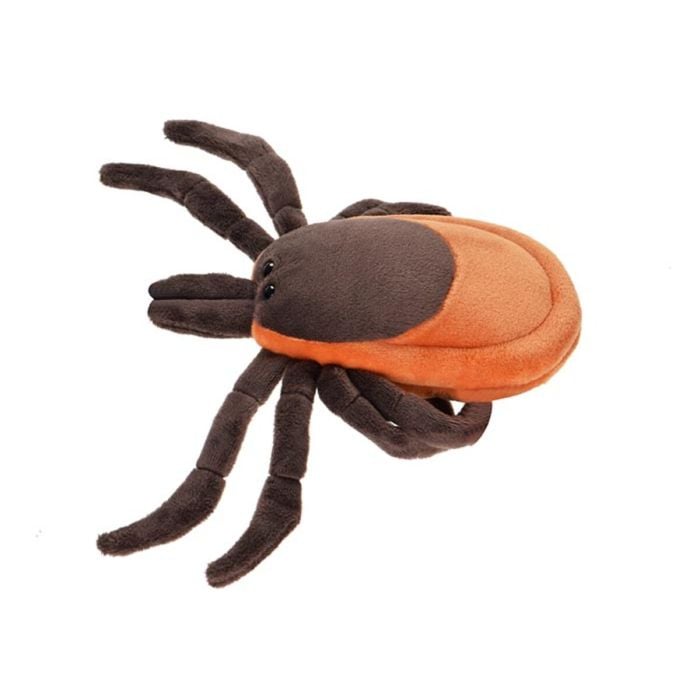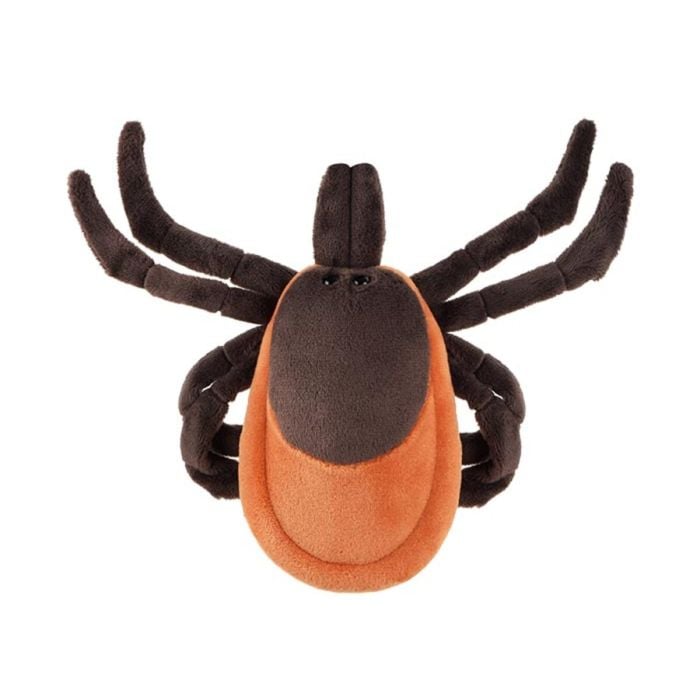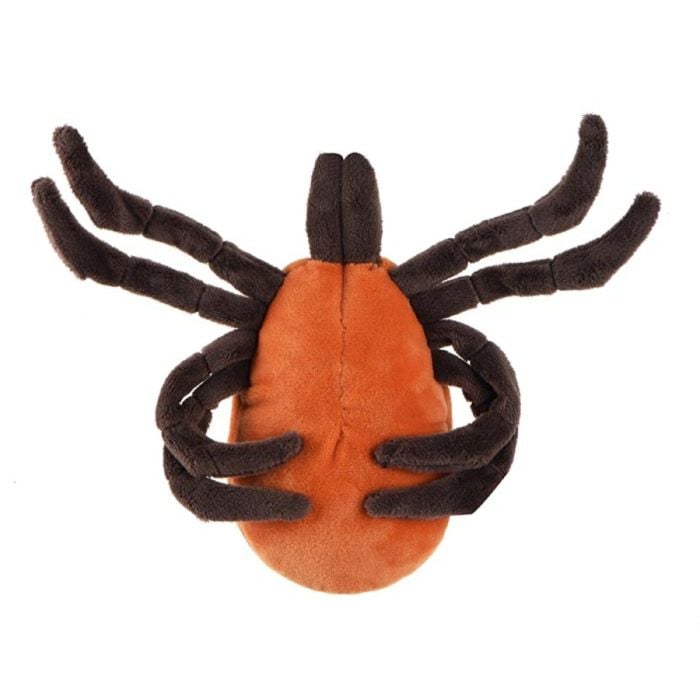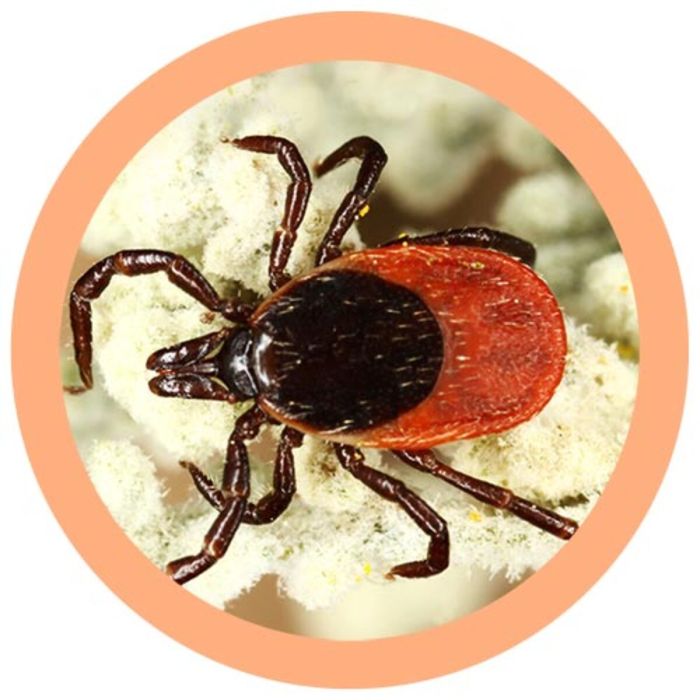Tick (Ixodes scapularis)
Out of Stock
Product Details
Additional Information
| Sizes | Giantmicrobes are based on actual microbes, cells, organisms and other critters, only 1,000,000 times actual size! Gigantic (GG) 40-60cm XL (XL) 25-38cm Original (PD) 12-20cm Minis (MM) 5-10cm each Keychain (KC) 5-10cm with clip |
|---|---|
| Materials | Plush from all new materials. Stuffed with polyester fiber fill. Surface washable: sponge with water & soap, air dry. |
| Packaging | Each plush microbe includes a printed card with fun, educational and fascinating facts about the actual microbe or cell. |
| Safety | Every product meets or exceeds U.S. and European standards for safety. For ages 3 and up. |
All about Tick (Ixodes scapularis)
FACTS: In most of the world’s dark woods and grassy plains, tiny ticks are questing in search of blood. These little vampires can be as small as pinpoints or as large as grapes – but they have an uncanny ability to sense heat and carbon dioxide, and to identify the well-travelled paths that their victims are likely to traverse. When they sense the motion of a nearby host, they drop from the tips of grasses or leaves and plunge their barbed, fang-like hypostome into their victim’s neck (or any other convenient spot) and lap up to hundreds of times their body-weight until they are sated. Or removed.
A kind of arthropod, ticks are not insects but arachnids related to scorpions and spiders. Hard ticks (such as deer ticks and dog ticks) have a plate-like scutum protecting their backs which gives them the comfort to feed for hours or days. Because diseases such as tularemia, Lyme disease, and Rocky- Mountain Spotted Fever tend not to be transmitted until dessert, there is often time to remove discovered ticks before lasting harm has been done. (Soft ticks, on the other hand, eat and run, dropping off after barely an hour.)
To remove a tick, folk remedies involving heated pins, matches, or gasoline are best avoided – they can provoke the tick into regurgitating part of its meal, and infection along with it. Instead, the tick should be grasped with a tweezers as close to the skin as possible, flipped onto its back (slowly, so as not to dislodge the “head”, or mouthparts, in the skin), and then gently pulled until it is removed. But resist the temptation to drive a stake through its heart as that can help spread disease as well. A bath of alcohol should allow you to discard a tick safely – perhaps with a clove of garlic.
| Name | Ixodes means hard-bodied, and scapularis means shoulder. Together, the name describes the body of this particular tick and the location it typically bites its victims. |
|---|
| Actual Size | They’re 3 to 4 millimeters long, or the size of a sesame seed. |
|---|
| Where It Lives | Ticks are parasites that climb onto and feed on the blood of large mammals, like deer and humans. There are hundreds of tick species found all over the world, but the most common one in the U.S. are the Ixodes scapularis, or deer ticks. They’re mostly found in the Northeastern part of the U.S. |
|---|
| Symptoms | Tick bites are itchy and uncomfortable, but the real concern when it comes to tick bites is that they are known to carry many diseases, like Lyme disease and Rocky Mountain Spotted Fever. These illnesses usually cause fever, chills, aching, pain, and a rash. |
|---|
| History | The first ticks to be collected and studied were in the early 1900’s. Scientists from all over the world became interested in studying them and the diseases they carry through to the 1950’s. |
|---|
| Fascinating Facts | They’re a part of the arachnid family, which means they have eight legs and are related to spiders. You should never remove a tick with your bare hands. |
|---|










